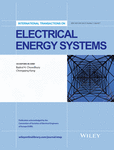Differential evolutionary algorithm-based optimal support vector machine for online dynamic available transfer capability estimation incorporating transmission capacity margins
Summary
To determine the feasibility of bilateral contracts, the independent system operator needs to estimate the transfer capability of the system. The estimated available transfer capability (ATC) values are updated on open access same-time information system by day by day or on hourly basis. This work proposes a fast and effective online technique for dynamic ATC (DATC) estimation. The impact of 2 reserve margins such as capacity benefit margin and transmission reserve margin is introduced with DATC estimation. In this proposed method support vector machine (SVM) is used to estimate the ATC values. The SVM is one of the effective machines learning algorithm in solving the regression problem. The parameters of the SVM are tuned by differential evolution algorithm to get accurate prediction of DATC values. The proposed method is applied to New England 10 machine 39-bus dynamic system for estimating DATC values for different cases. Severe lines are identified using contingency screening analysis. The test results are compared with artificial neural network technique. The study has been carried out for different cases such as normal, line outage and stressed condition. The SVM technique gives better results than artificial neural network technique.




